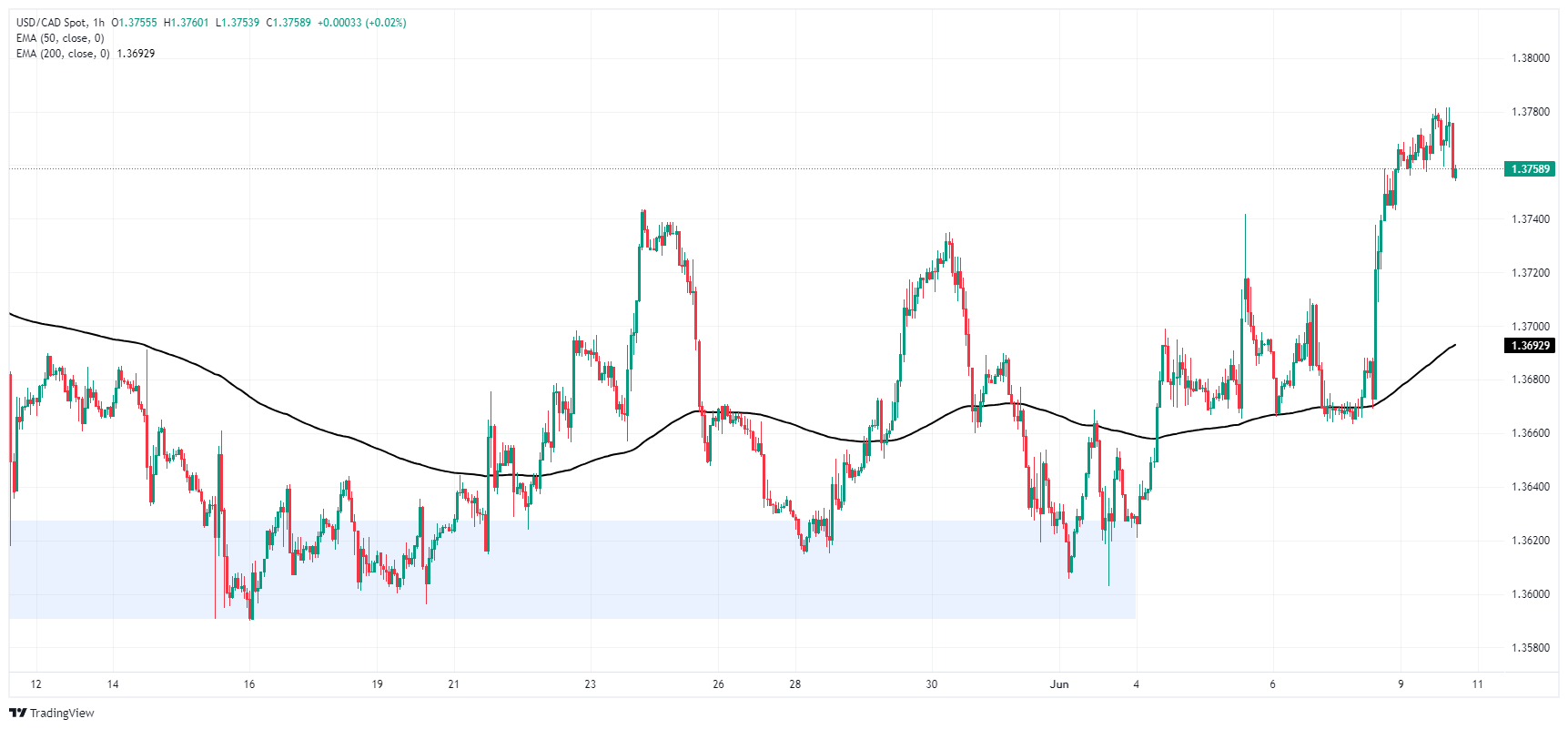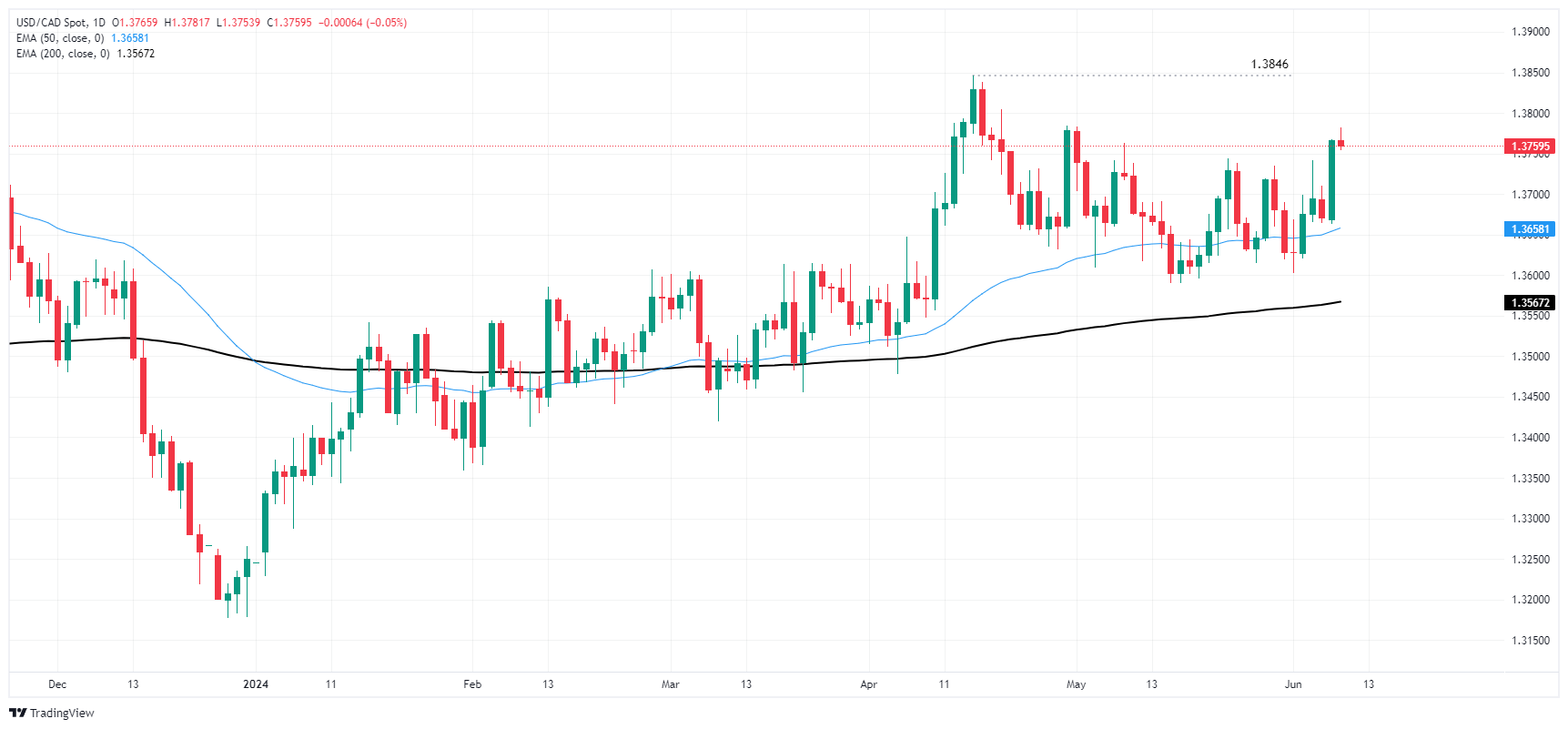- The Canadian Dollar remains mixed on Monday, flat against the USD.
- Canada practically absent from the economic calendar this week.
- BoC Governor Tiff Macklem’s speech is scheduled for the midweek market session.
He Canadian dollar (CAD) remains sideways against the US Dollar to enter another week of trading as momentum in the CAD space remains weak. Markets are still recovering from Friday’s jobs report, and volatility remains high despite the lack of momentum.
Canada is largely absent from the economic calendar on Monday, with low-level data throughout the week. A speech by Bank of Canada (BoC) Governor Tiff Macklem will be released on Wednesday when the BoC chief participates in a roundtable discussion ironically titled “overcoming economic volatility.” However, the BoC governor’s words are likely to be overshadowed by a double event of the US Consumer Price Index (CPI) and the Federal Reserve (Fed) rate decision also scheduled for Wednesday .
Daily movements and market drivers: Canada is absent from the economic calendar
- The Canadian Dollar remains sideways against its closest peer, the US Dollar, on a data-devoid Monday as Friday’s NFP hangover continues.
- Investors are awaiting key US inflation data due on Wednesday, as well as the Fed’s update on its interest rate projections for the coming years.
- The New York Fed released a consumer survey on Monday that revealed that consumers are still not optimistic about the long-term inflation outlook.
- Median results from the New York Fed survey showed that consumers’ one-year inflation expectations fell to 3.2% from 3.3% previously, but five-year inflation expectations rose to 3.0% from 2.8%. former.
- BoC Governor Tiff Macklem is expected to be overshadowed on Wednesday by changes to the Fed’s rate expectations.
Price of the Canadian Dollar Today
The table below shows the percentage change of the Canadian Dollar (CAD) against the major currencies listed today. The Canadian Dollar was the strongest against the Euro.
| USD | EUR | GBP | JPY | CAD | AUD | NZD | CHF | |
|---|---|---|---|---|---|---|---|---|
| USD | 0.44% | -0.12% | 0.08% | 0.00% | -0.42% | -0.28% | -0.08% | |
| EUR | -0.44% | -0.21% | -0.14% | -0.18% | -0.58% | -0.46% | -0.28% | |
| GBP | 0.12% | 0.21% | 0.20% | 0.03% | -0.37% | -0.25% | -0.07% | |
| JPY | -0.08% | 0.14% | -0.20% | -0.06% | -0.56% | -0.45% | -0.12% | |
| CAD | -0.00% | 0.18% | -0.03% | 0.06% | -0.39% | -0.28% | -0.10% | |
| AUD | 0.42% | 0.58% | 0.37% | 0.56% | 0.39% | 0.13% | 0.31% | |
| NZD | 0.28% | 0.46% | 0.25% | 0.45% | 0.28% | -0.13% | 0.18% | |
| CHF | 0.08% | 0.28% | 0.07% | 0.12% | 0.10% | -0.31% | -0.18% |
The heat map shows the percentage changes of the major currencies against each other. The base currency is chosen from the left column, while the quote currency is chosen from the top row. For example, if you choose the Canadian Dollar from the left column and move along the horizontal line to the US Dollar, the percentage change shown in the box will represent CAD (base)/USD (rate).
Technical Analysis: Canadian Dollar stays in place, USD/CAD stuck just below 1.3800
The Canadian Dollar (CAD) is delivering a firmly mixed performance on Monday, remaining flat against the US Dollar (USD) as a lack of momentum weighs on the key CAD pair. The CAD gained about a quarter of a percentage point against the Euro (EUR), but lost four tenths of a percentage point against the Australian Dollar (AUD).
USD/CAD is stuck just below the 1.3800 area. The pair’s upward push since last Friday failed to extend into another day of gains, but sellers have been unable to regain control.
The 1.3780 level is the target for intraday buyers to break through, while shorts will need to build up enough pressure to push bids back to the 1.3700 area. The lack of trend is weighing on USD/CAD, with the pair rising 3.9% in 2024 but remaining below the year’s high bids of 1.3846 set in mid-April.
USD/CAD Hourly Chart
USD/CAD Daily Chart
The Canadian Dollar FAQs
The key factors that determine the price of the Canadian dollar (CAD) are the level of interest rates set by the Bank of Canada (BoC), the price of oil, Canada’s main export product, the health of its economy, inflation and the trade balance, which is the difference between the value of Canadian exports and its imports. Other factors are market confidence, that is, whether investors bet on riskier assets (risk-on) or look for safe assets (risk-off), with the risk-on being positive for the CAD. As its largest trading partner, the health of the US economy is also a key factor influencing the Canadian dollar.
The Bank of Canada (BoC) exerts significant influence over the Canadian Dollar by setting the level of interest rates that banks can lend to each other. This influences the level of interest rates for everyone. The BoC’s main objective is to keep inflation between 1% and 3% by adjusting interest rates up or down. Relatively high interest rates are usually positive for the CAD. The Bank of Canada can also use quantitative easing and tightening to influence credit conditions, with the former being negative for the CAD and the latter being positive for the CAD.
The price of oil is a key factor influencing the value of the Canadian Dollar. Oil is Canada’s largest export, so the price of oil tends to have an immediate impact on the value of the CAD. Generally, if the price of oil rises, the CAD also rises, as aggregate demand for the currency increases. The opposite occurs if the price of oil falls. Higher oil prices also tend to lead to a higher probability of a positive trade balance, which also supports the CAD.
Although inflation has traditionally always been considered a negative factor for a currency, as it reduces the value of money, the opposite has actually happened in modern times, with the relaxation of cross-border capital controls. Higher inflation often leads central banks to raise interest rates, attracting more capital inflows from global investors looking for a lucrative place to store their money. This increases the demand for the local currency, which in the case of Canada is the Canadian Dollar.
The published macroeconomic data measures the health of the economy and may have an impact on the Canadian dollar. Indicators such as GDP, manufacturing and services PMIs, employment and consumer confidence surveys can influence the direction of the CAD. A strong economy is good for the Canadian dollar. Not only does it attract more foreign investment, but it may encourage the Bank of Canada to raise interest rates, resulting in a stronger currency. However, if economic data is weak, the CAD is likely to fall.
Source: Fx Street
I am Joshua Winder, a senior-level journalist and editor at World Stock Market. I specialize in covering news related to the stock market and economic trends. With more than 8 years of experience in this field, I have become an expert in financial reporting.







